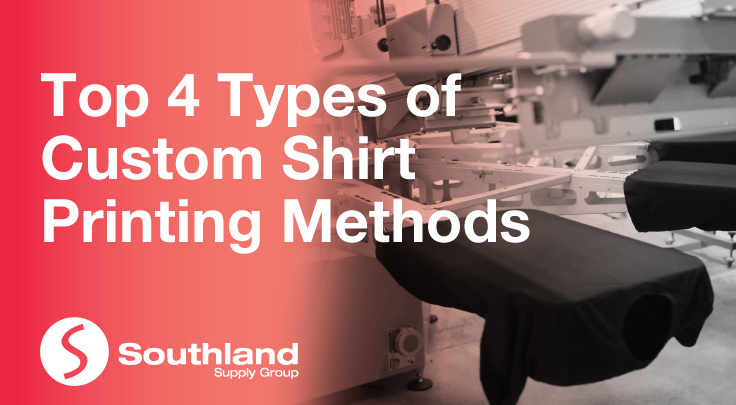Top 4 Types of Custom Shirt Printing Methods

These days, garment customisation is easier than ever before. Whether you’re a marketing agency looking for branded shirts for an event, a corporate business looking for personalised uniform, or an influencer management agency designing branded merchandise, selecting the right printing method that best highlights your products or service is critical.
There are various types of printing methods available and they're continuing to evolve. Each method is suitable for different situations and offers its own unique advantages.
So, what are the different types of printing and how do they vary from each other?
1. Screen Printing
Screen printing is the original, and still most common way of printing on garments. If you want a t-shirt or polo shirt with a soft print and consistent colours, this is most probably the best method of printing for you. Screen prints remain vibrant, bright and last for a long time. Screen print can be used for most garments including polo shirts, hoodies and other apparel.
Screen Printing Advantages
- It guarantees the exact replication, consistent quality and durability.
- It is cost effective in volume.
- It is scalable as the mesh screen and templates can be reused several time.
Screen Printing Disadvantages
- Screen printing is not cost effective for small orders or one off orders, due to the set up costs.
- Screen printing is not suitable for complex designs with multi-colours and gradients.
- Screen printing takes longer for set up, as screens and stencils need to be made.
- As each colour needs to be separated as unique to be used through stencil, colour accuracy might become an issue.
2. Heat Press Printing
Heat press printing is the most economical print style for small orders. It also has the benefit of being able to replicate very complex designs, with no limits on colour numbers or gradients. The finished result is a vivid and durable garment.
Heat Press Printing Advantage
- A more economical method for small quantities.
- Simple to use.
- High-quality image reproductions are possible with a heat press.
Heat Press Printing Disadvantages
- Doesn’t work well on darker materials.
- Can’t be used on materials that are sensitive to high heat.
- It takes longer to print.
3. Direct To Garment Printing (DTG)
DTG printing is best suited for designs or artwork considered too complex for other printing techniques, such as screen printing, which is best suited for designs with few colors.
Direct To Garment Printing Advantages
- Print as many colors as desired
- Set-up times are low when compared to screen printing.
- One offs - As there is no set up required, it is ideally suitable for one-off prints
Direct To Garment Printing Disadvantages
- Higher initial investment.
- Takes more time to produce in big quantities.
- Less durable designs.
4. Vinyl Cut Printing
Vinyl cut printing is the method of cutting vinyl sheets using a CAD plotter and cutter. This cut design is then applied to the garment using a heat press machine. It is widely used in adding names and numbers to sports t-shirts.
Vinyl Cut Printing Advantages
- Durability - No fading cracking of the print
- Quick Turnaround - As there is no setup involved, new designs can be done quickly.
- Ideal for small quantities - As there is no setup cost, they are suitable for one-off prints.
- Print colour and material options - As the types and colours of vinyl (colours, glitter, metallic foil, reflective) are innumerable.
Vinyl Cut Printing Disadvantages
- Print Size - The bigger the print, the heavier the garment gets.
- Print Quality - Print is not as soft as screen prints.
- Not Cost-Effective for Large Orders - It is not cost-effective for large orders as the cost increases linearly with quantity, unlike Screen printing which comes down with qty.
There are different methods to print on t-shirts or any other garments. Each method has its unique advantages and disadvantages. Each method is best suitable for their own different occasion. At Southland, we provide different types of custom t-shirt printing services. Get in touch with us today to learn more.
